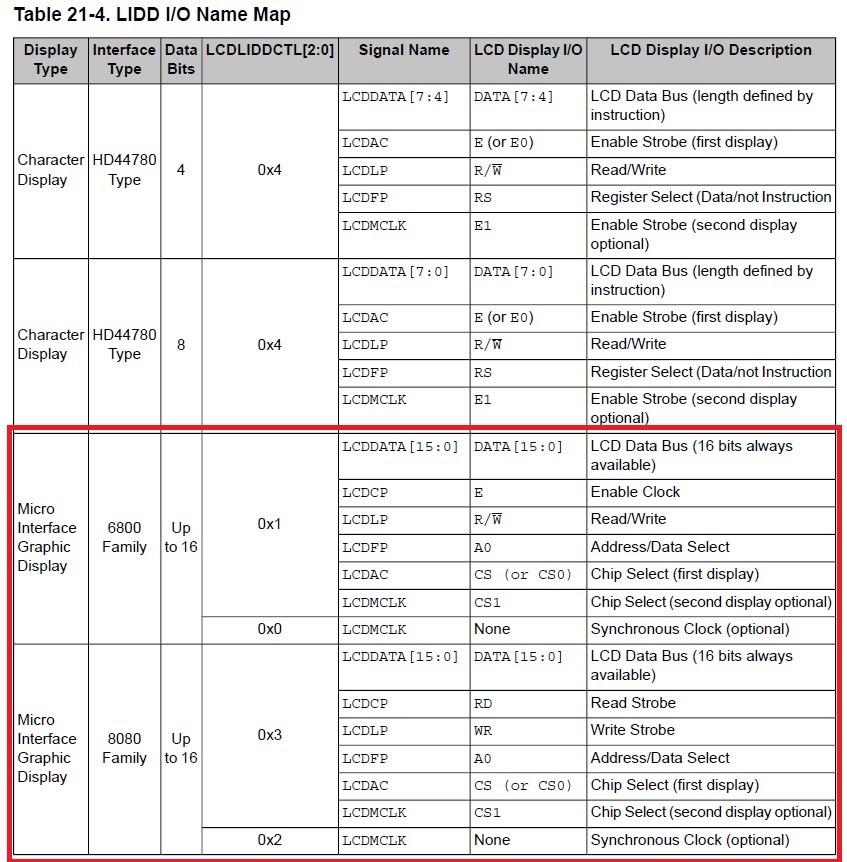SPMA082 August 2021 TM4C1230C3PM , TM4C1230D5PM , TM4C1230E6PM , TM4C1230H6PM , TM4C1231C3PM , TM4C1231D5PM , TM4C1231D5PZ , TM4C1231E6PM , TM4C1231E6PZ , TM4C1231H6PGE , TM4C1231H6PM , TM4C1231H6PZ , TM4C1232C3PM , TM4C1232D5PM , TM4C1232E6PM , TM4C1232H6PM , TM4C1233C3PM , TM4C1233D5PM , TM4C1233D5PZ , TM4C1233E6PM , TM4C1233E6PZ , TM4C1233H6PGE , TM4C1233H6PM , TM4C1233H6PZ , TM4C1236D5PM , TM4C1236E6PM , TM4C1236H6PM , TM4C1237D5PM , TM4C1237D5PZ , TM4C1237E6PM , TM4C1237E6PZ , TM4C1237H6PGE , TM4C1237H6PM , TM4C1237H6PZ , TM4C123AE6PM , TM4C123AH6PM , TM4C123BE6PM , TM4C123BE6PZ , TM4C123BH6PGE , TM4C123BH6PM , TM4C123BH6PZ , TM4C123BH6ZRB , TM4C123FE6PM , TM4C123FH6PM , TM4C123GE6PM , TM4C123GE6PZ , TM4C123GH6PGE , TM4C123GH6PM , TM4C123GH6PZ , TM4C123GH6ZRB , TM4C1290NCPDT , TM4C1290NCZAD , TM4C1292NCPDT , TM4C1292NCZAD , TM4C1294KCPDT , TM4C1294NCPDT , TM4C1294NCZAD , TM4C1297NCZAD , TM4C1299KCZAD , TM4C1299NCZAD , TM4C129CNCPDT , TM4C129CNCZAD , TM4C129DNCPDT , TM4C129DNCZAD , TM4C129EKCPDT , TM4C129ENCPDT , TM4C129ENCZAD , TM4C129LNCZAD , TM4C129XKCZAD , TM4C129XNCZAD
2.1.2 LIDD Controller
The LIDD controller can offer either an asynchronous or a synchronous interface depending on the mode of operation. It provides full-timing programmability of control signals (chip select, read/write strobes, enable, direction) and output data.
The LIDD controller is mainly used for character-based LCD panels. In addition to supporting character-based LCD panel, it can be configured to provide a generic 8080 or 6800 Microprocessor Unit (MPU) parallel bus interface to the displays. The LIDD controller should be configured in generic 8080 or 6800 bus interface mode when the display has an integrated display controller and frame buffer. The LIDD controller updates the frame buffer in the display. Be aware that the integrated display controller in the display is responsible for handling all the display updates from this frame buffer. In this mode of operation, the LIDD controller only performs write operations whenever the frame changes.
The Kentec320x240x16 display panel found on the DK-TM4C129x EVM board is one example of a display panel that has an integrated SSD2119 display controller with built-in frame buffer. Figure 1-4 illustrates this.
The LIDD controller can be configured for different MPU interfaces by specifying the MODE bits in the LCDLIDDCTL register. Figure 2-3 highlights the LCD module pins mapping for MPU interface modes. Kentec320x240x16 display falls under 8080 family of interface type. Figure 2-4 highlights MODE = 0 x 3 that is used for interfacing to the Kentec320x240x16 display on the DK-TM4C129x EVM board.
 Figure 2-3 LIDD IO Name Map
Figure 2-3 LIDD IO Name Map Figure 2-4 LIDD Mode Signal Functions
Figure 2-4 LIDD Mode Signal Functions